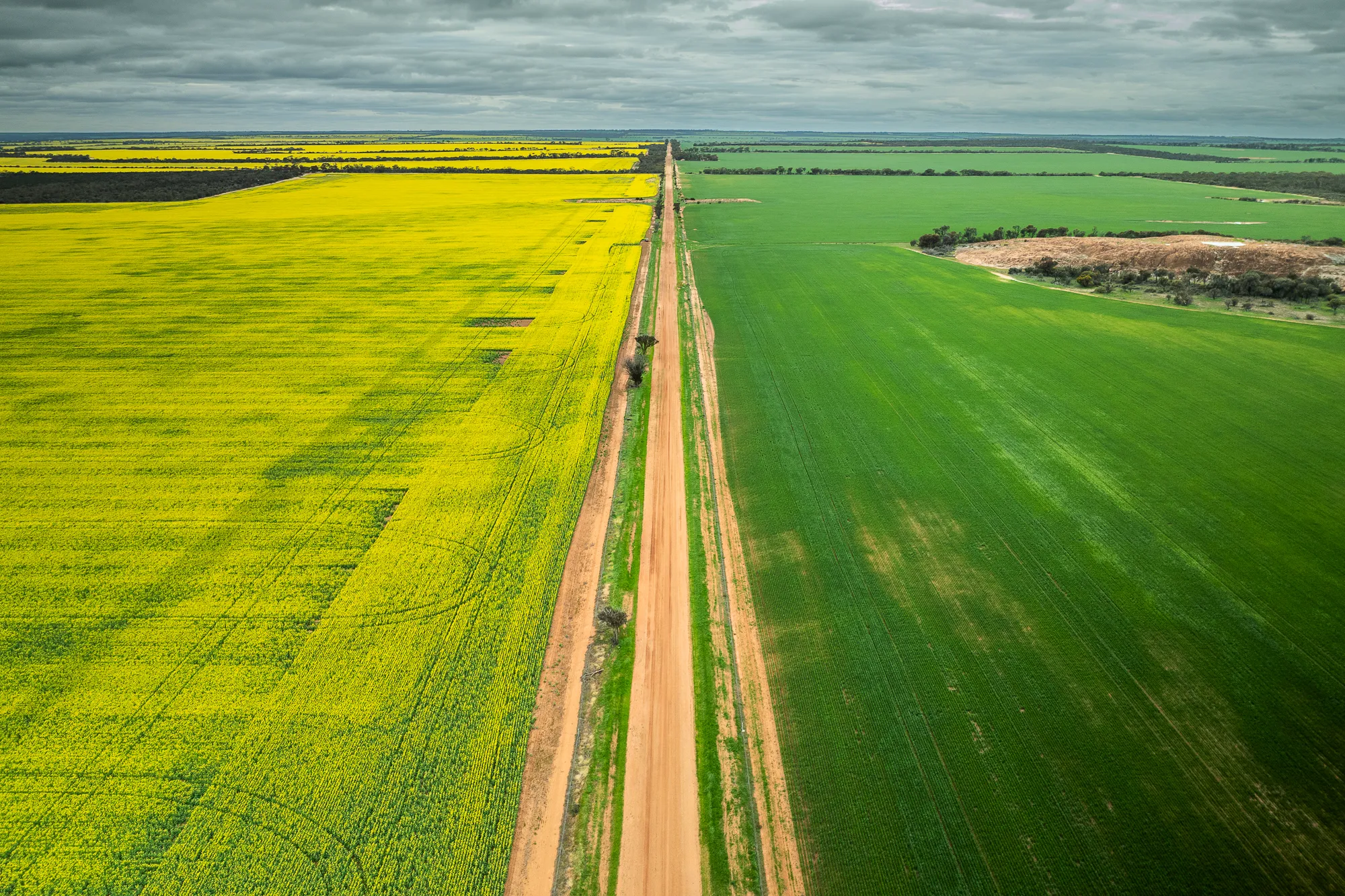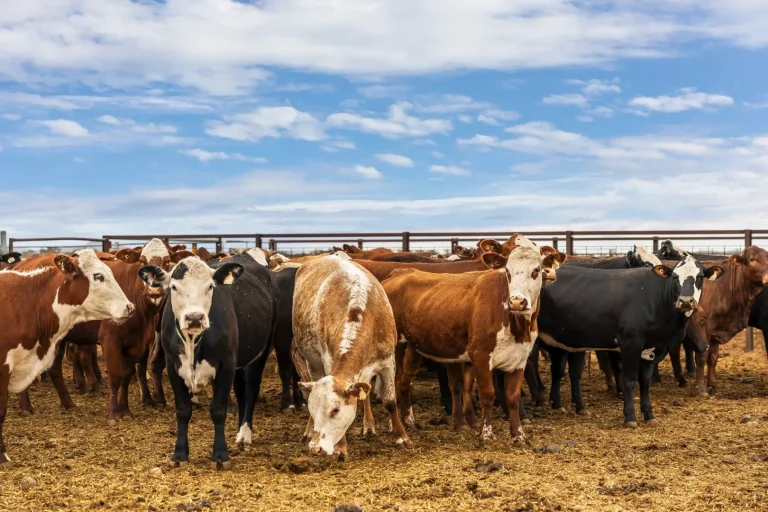Australia vs. New Zealand Farmland: A Comparative Guide for Global Investors
Global agricultural investors increasingly evaluate opportunities across multiple markets when constructing international farmland portfolios, making comparative analysis essential for optimal investment decisions. Australia vs. New Zealand farmland: a comparative guide for global investors reveals the distinct advantages, operational characteristics, and investment considerations that differentiate these two premier agricultural investment destinations in the Asia-Pacific region. At Agribusiness Horizons, we regularly assist international clients in evaluating cross-border agricultural opportunities, providing comprehensive analysis that enables global investors to understand the unique benefits and considerations associated with farmland acquisition in both Australian and New Zealand markets.
The proximity of Australia and New Zealand creates natural comparison opportunities for international investors seeking to optimize their agricultural asset allocation across complementary but distinct farming systems. Both nations offer stable democratic institutions, advanced agricultural technologies, and established export infrastructure, yet their agricultural sectors demonstrate fundamental differences in scale, production systems, and market characteristics that create varying investment opportunities for global capital seeking exposure to different agricultural strategies.
This comprehensive analysis examines the comparative advantages, market dynamics, and investment characteristics that distinguish Australian and New Zealand agricultural properties. We explore the operational differences, regulatory frameworks, and strategic considerations that enable international investors to make informed decisions about agricultural investment allocation between these two sophisticated agricultural markets.
Agricultural Scale and Operational Characteristics
Australian agricultural operations provide international investors with access to large-scale farming enterprises that demonstrate exceptional economies of scale through vast pastoral properties and broadacre cropping systems that may be unavailable in other global agricultural markets. The continental scale of Australian agriculture enables international capital to access farming operations that span thousands of hectares, creating operational efficiencies and production volumes that support industrial-scale agricultural enterprises.
New Zealand agricultural systems offer international investors exposure to intensive farming operations that optimize productivity per hectare through sophisticated pasture management, livestock breeding programs, and precision agricultural technologies applied across smaller but highly productive land areas. The intensive nature of New Zealand agriculture creates superior per-hectare returns through efficient land utilization and premium product positioning in international markets.
Operational complexity differs significantly between Australian and New Zealand agricultural systems, with Australian operations often requiring extensive infrastructure for transportation, communication, and livestock management across vast distances, while New Zealand farming operations typically benefit from compact geography and established infrastructure networks that reduce operational complexity and management requirements.
Climate diversity across Australian agricultural regions provides international investors with exposure to multiple growing environments and seasonal patterns within a single market, enabling portfolio diversification across different climatic zones and production systems. New Zealand agricultural regions offer more consistent climatic conditions that support predictable production cycles and specialized agricultural enterprises optimized for specific environmental conditions.
Market Access and Export Infrastructure
Australia vs. New Zealand farmland: a comparative guide for global investors reveals significant differences in market positioning and export advantages that affect agricultural investment returns. Australian agricultural exports benefit from extensive trade relationships across Asia, Europe, and the Americas, providing international investors with broad market diversification and reduced dependence on individual trading partners or consumer markets.
New Zealand agricultural exports demonstrate exceptional market positioning in premium consumer segments, particularly in dairy products and specialized meat products that command superior pricing in international markets. The quality reputation of New Zealand agricultural products enables international investors to access farming operations that generate enhanced margins through premium market positioning and brand recognition.
Geographic positioning advantages create different market access opportunities for Australian and New Zealand agricultural operations, with Australia providing closer access to large Asian consumer markets while New Zealand maintains established relationships with European and North American premium market segments. These geographic advantages enable international investors to select agricultural investments based on their preferred market exposure and geographic diversification objectives.
Processing infrastructure development across both countries provides international investors with different value-addition opportunities, with Australian agricultural processing focused on large-scale commodity handling and export logistics, while New Zealand processing infrastructure emphasizes quality enhancement and premium product development that supports higher-value agricultural returns.
Regulatory Environment and Foreign Investment Frameworks
Foreign investment regulations present different requirements and opportunities for international capital in Australian and New Zealand agricultural markets, with Australia maintaining comprehensive oversight through the Foreign Investment Review Board while providing clear pathways for substantial agricultural acquisitions. These regulatory frameworks enable international investors to access significant agricultural opportunities while ensuring compliance with foreign ownership requirements.
New Zealand foreign investment regulations include additional considerations for agricultural land acquisition, particularly regarding farm size thresholds and residency requirements that may affect international investor eligibility and transaction structures. These regulatory differences require careful consideration when international investors evaluate comparative opportunities across both markets.
Property rights protection in both countries provides international investors with secure legal frameworks that support long-term agricultural investment strategies, though specific ownership structures and tenure arrangements may vary between jurisdictions. These legal protections ensure that global capital receives comprehensive security regardless of the chosen investment market.
Environmental compliance requirements differ between Australian and New Zealand agricultural operations, creating varying operational considerations for international investors seeking to maintain sustainable farming practices while optimizing agricultural returns. Understanding these environmental frameworks enables global investors to select agricultural investments that align with their sustainability objectives and operational preferences.
Agricultural Production Systems and Investment Opportunities
Livestock operations across Australian and New Zealand agricultural markets offer international investors different scale and intensity advantages, with Australian cattle and sheep operations providing extensive grazing systems across large pastoral properties, while New Zealand livestock enterprises demonstrate intensive management systems that optimize animal productivity and product quality through sophisticated breeding and nutrition programs.
Cropping enterprises present varying opportunities for international investors, with Australian broadacre cropping providing exposure to large-scale grain and oilseed production systems, while New Zealand cropping operations focus on specialized crops and horticultural enterprises that generate premium returns through quality differentiation and market positioning.
Dairy farming represents a significant investment sector in both countries, though with different operational characteristics that appeal to different international investor preferences. Australian dairy operations often provide large-scale enterprises with substantial production volumes, while New Zealand dairy farming demonstrates intensive systems that achieve exceptional per-hectare productivity through advanced pasture management and genetic programs.
Diversified agricultural enterprises enable international investors to access integrated farming operations that combine multiple agricultural activities to optimize land utilization and reduce operational risks. Both countries offer diversified farming opportunities, though the specific combinations and operational scales differ based on local agricultural conditions and market characteristics.
Technology Adoption and Innovation Systems
Agricultural technology implementation across both countries provides international investors with access to advanced farming systems, though with different focuses and applications that reflect local agricultural priorities and conditions. Australian agricultural technology often emphasizes automation and remote monitoring systems designed for large-scale operations across vast distances, while New Zealand agricultural innovation focuses on precision management and efficiency optimization for intensive production systems.
Research and development infrastructure supporting agricultural innovation creates ongoing value enhancement opportunities for international investors in both markets, with Australia maintaining extensive agricultural research networks focused on broadacre agriculture and pastoral systems, while New Zealand agricultural research emphasizes intensive production optimization and premium product development.
Digital agriculture platforms utilized across both countries enable international investors to access farming operations with sophisticated data management and decision support systems, though implementation priorities may differ based on operational scale and production system requirements. These technology systems create competitive advantages that benefit international capital through enhanced operational efficiency and productivity optimization.
Innovation partnerships between agricultural producers and technology companies create ongoing improvement opportunities for international investors, with both countries maintaining active agricultural innovation ecosystems that support continuous advancement in farming practices and operational efficiency.
Investment Scale and Capital Requirements
Capital requirements for agricultural investment differ substantially between Australian and New Zealand markets, with Australian agricultural properties often requiring larger initial investments due to property scale and infrastructure requirements, while New Zealand agricultural acquisitions may offer lower entry thresholds with opportunities for intensive value enhancement through operational improvements.
Return characteristics vary between Australian and New Zealand agricultural investments, with Australian operations often providing stable returns through large-scale production and established market relationships, while New Zealand agricultural enterprises may offer enhanced return potential through premium market positioning and intensive management systems that optimize productivity and profitability.
Financing opportunities available to international investors differ between both markets, with established agricultural lending networks providing comprehensive financing solutions though with varying terms and requirements based on local banking relationships and regulatory frameworks. These financing options enable international capital to optimize investment structures while accessing professional agricultural lending expertise.
Portfolio construction strategies for international investors may incorporate both Australian and New Zealand agricultural assets to achieve geographic diversification and complementary agricultural exposure that balances scale advantages with intensive production benefits across different operational systems and market characteristics.
Comparative Investment Analysis Framework
| Investment Factor | Australian Farmland | New Zealand Farmland |
|---|---|---|
| Operational Scale | Exceptional Large-Scale Operations | Intensive Per-Hectare Optimization |
| Market Positioning | Broad Global Market Access | Premium Segment Focus |
| Technology Integration | Automation and Remote Systems | Precision Management Systems |
| Capital Requirements | Higher Initial Investment | Moderate Entry Thresholds |
| Regulatory Complexity | Comprehensive but Clear | Additional Ownership Considerations |
| Return Characteristics | Stable Volume-Based Returns | Premium Value-Added Returns |
| Infrastructure Needs | Extensive Due to Scale | Compact and Established |
| Export Advantages | Asian Market Proximity | European Premium Access |
This framework illustrates how Australia vs. New Zealand farmland: a comparative guide for global investors presents different advantages that appeal to varying international investment strategies and objectives.
Agribusiness Horizons’ Cross-Border Agricultural Expertise
At Agribusiness Horizons, we maintain specialized knowledge of both Australian and New Zealand agricultural markets, enabling us to provide international investors with comprehensive comparative analysis that supports optimal agricultural investment decisions. Our understanding of Australia vs. New Zealand farmland: a comparative guide for global investors includes detailed knowledge of regulatory requirements, market dynamics, and operational considerations that affect international agricultural investment performance across both markets.
Our strategic advisory and consulting services provide international investors with comparative market analysis that evaluates agricultural opportunities across different geographic markets to optimize portfolio construction and investment allocation strategies. We coordinate with professional networks across both countries to ensure that global investors receive comprehensive support regardless of their chosen investment market.
The sophistication of our valuation and financial analysis services includes cross-border valuation expertise that enables accurate comparison of agricultural investment opportunities across different markets and regulatory frameworks. Our valuation methodologies account for operational differences, market characteristics, and regulatory variations that affect international agricultural investment returns.
Our agribusiness transactions expertise extends across multiple markets, enabling international investors to access professional transaction support that understands local requirements while maintaining global investment perspectives that optimize cross-border agricultural acquisition strategies.
Risk Management Across Different Agricultural Markets
Political risk assessment reveals both countries maintain stable democratic institutions and established legal frameworks that protect international agricultural investment, though specific regulatory environments and policy priorities may create different operational considerations for global capital seeking agricultural exposure across multiple markets.
Climate risk diversification benefits international investors through agricultural portfolio allocation across different geographic regions and climatic zones, with Australian and New Zealand agricultural operations providing natural hedging opportunities through varying seasonal patterns and environmental conditions that reduce overall portfolio climate exposure.
Market risk management advantages emerge through international agricultural portfolio diversification across different export markets and consumer segments, enabling global investors to balance broad market exposure through Australian agricultural operations with premium market positioning through New Zealand agricultural enterprises.
Currency risk considerations affect international investors differently across both markets, with Australian dollar and New Zealand dollar exposure providing varying correlation characteristics and hedging opportunities that may complement broader international investment portfolios and currency management strategies.
Operational Management and Professional Services
Professional agricultural management services available in both countries provide international investors with access to experienced farm managers and agricultural advisors who understand local conditions and operational requirements, though service structures and management approaches may differ based on local agricultural practices and industry standards.
Advisory services supporting international agricultural investment include specialized professionals who understand cross-border investment requirements and can coordinate complex transactions that meet international investor needs while ensuring compliance with local regulations and operational standards.
Communication infrastructure across both countries enables international investors to maintain effective oversight of their agricultural operations through advanced telecommunications and reporting systems, though specific infrastructure characteristics and service availability may vary between rural regions and agricultural districts.
Financial reporting and compliance services provide international investors with standardized reporting systems that meet global investment standards while ensuring compliance with local regulatory requirements and tax obligations that affect international agricultural investment returns.
Future Development and Market Evolution
Agricultural development trends across both countries create ongoing opportunities for international investors to access emerging agricultural sectors and value-added enterprises that enhance investment returns while supporting agricultural innovation and market development initiatives.
Infrastructure investment programs supporting agricultural development provide long-term value enhancement opportunities for international agricultural investors through improved transportation networks, communication systems, and processing facilities that benefit agricultural operations and enhance asset values.
Market access development continues expanding export opportunities for agricultural producers in both countries, creating additional value streams for international investors through enhanced market reach and premium positioning opportunities that support superior agricultural investment returns.
Sustainability initiatives across both agricultural markets create opportunities for international investors to access environmentally responsible agricultural operations that meet evolving consumer preferences while generating competitive returns through sustainable production practices and premium market positioning.
Strategic Investment Considerations
Portfolio allocation strategies for international investors may benefit from agricultural exposure across both markets to achieve optimal diversification and risk management while accessing complementary agricultural systems that provide different return characteristics and market exposure opportunities.
Investment timing considerations may favor different markets based on seasonal production cycles, market conditions, and regulatory developments that create varying acquisition opportunities for international capital seeking optimal agricultural investment entry points.
Currency hedging strategies enable international investors to manage exchange rate exposure across multiple markets while maintaining operational flexibility and return optimization opportunities through sophisticated financial instruments and professional currency management services.
Exit strategy planning requires understanding of different market liquidity characteristics and buyer networks across both countries, enabling international investors to maintain flexible portfolio management capabilities while optimizing long-term investment performance and capital allocation strategies.
Conclusion
The comprehensive evaluation revealed through Australia vs. New Zealand farmland: a comparative guide for global investors demonstrates that both countries offer exceptional agricultural investment opportunities with distinct advantages that appeal to different international investment strategies and objectives. Australian agricultural markets provide scale advantages and broad market access that support large-scale investment strategies, while New Zealand agricultural opportunities emphasize intensive production systems and premium market positioning that generate enhanced per-hectare returns.
International investors benefit from understanding these comparative advantages to optimize their agricultural portfolio allocation across complementary but distinct agricultural systems that provide geographic diversification and varying operational characteristics. The combination of stable institutional frameworks, advanced agricultural technologies, and established export infrastructure makes both countries attractive destinations for global agricultural capital seeking exposure to sophisticated farming operations.
As global agricultural investment continues evolving, several strategic questions merit consideration: How might changing global consumer preferences and trade relationships affect the comparative advantages of Australian versus New Zealand agricultural operations? What role will technology advancement play in further differentiating the investment characteristics and return potential of agricultural systems across both countries? How can international investors best structure their agricultural portfolios to capture the complementary benefits of both large-scale and intensive agricultural operations across these two premier agricultural markets?
For global investors seeking to optimize their agricultural investment allocation across multiple markets, Australia vs. New Zealand farmland: a comparative guide for global investors provides essential insights that support informed decision-making and strategic portfolio construction. Contact Agribusiness Horizons today to discuss how our cross-border agricultural expertise can help you evaluate and access the most suitable agricultural investment opportunities across both Australian and New Zealand markets based on your specific investment objectives and portfolio requirements.



